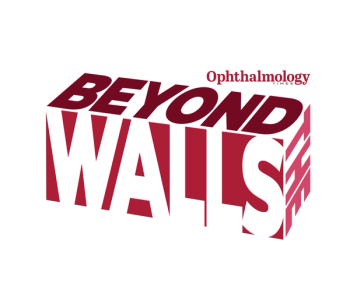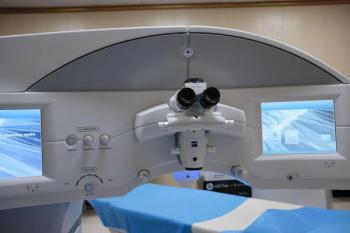
- Ophthalmology Times, March 15 2019
- Volume 44
- Issue 5
Making the most of diagnostic technology toolkit
Advancements in preoperative assessment, techniques help to enhance refractive surgical outcomes
Refractive surgeons must understand the arsenal of diagnostic technology available to them as well as how and when to use it for their patients, according to Renato Ambrósio Jr., MD, PhD.
Reviewed by Renato AmbrÃsio Jr., MD, PhD
Careful preoperative evaluation can help ophthalmologists boost patient satisfaction by improving surgical outcomes and avoiding many of the potential complications of refractive surgery. Preoperative assessment must include understanding and proper counseling of patients as well as provide a comprehensive evaluation for planning the procedure and screening for potential complications, said Renato Ambrósio Jr., MD, PhD.
“Listen to patients’ needs, motivations, and expectations to understand why they have come to refractive surgery, and what they expect from it,” said Dr. Ambrósio, adjunct professor of ophthalmology, Federal University of the State of Rio de Janeiro (UNIRIO), and director of refractive surgery, VisareRIO, Rio de Janeiro, Brazil.
“In addition, imaging has revolutionized our ability to screen, plan, and evaluate the results of refractive procedures, gaining fundamental relevance in the preoperative workup,” he said.
Diving deeper
The list of diagnostic technologies is long and growing, starting from classic slit lamp biomicroscopy with digital documentation, central corneal thickness, and Placido’s disk-based topography.
Scheimpflug tomography provides a three-dimensional picture of the cornea, an imaging technique distinct from front-surface topography as well as from segmental tomography by OCT. Very high-frequency ultrasound provides epithelial thickness mapping. Proper nomenclature is essential to distinguish technologies.
In addition, ocular wavefront, ocular scattering evaluation, novel ocular surface imaging with meibomiography, IOP, corneal biomechanical assessment, confocal, and specular microscopy are available. Molecular biology and genetics are moving toward practical applications for patient evaluation.
Every refractive surgeon must understand this arsenal as well as how and when to use it for patients, he noted.
“We have to understand if the candidate presents for elective refractive surgery, or if the case requires a therapeutic appoach1,” Dr. Ambrósio said. “If the treatment is done on the cornea, should it be a phakic IOL or crystalline lens surgery? If the patient is a candidate for corneal laser-vision correction, is it best to do LASIK, SMILE, or PRK?”
It is important to recognize the complications to be avoided and how to identify the cases at higher risk, Dr. Ambrósio added.
“We have to know our ourselves and our tests and the conditions we have to identify,” he said. Ectasia, or keratectasia, is a rare but very serious complication of laser-vision correction.
Ectasia has three primary roots:
- the innate structure and biomechanical properties of the cornea,
- the impact from the surgery on the cornea, and
- postoperative trauma, most often due to eye rubbing.
Key to prevention is understanding the pathophysiology of ectasia to assess the individual risk of biomechanical decompensation, he said.
“The literature recognizes forme fruste keratoconus as the major risk factor for ectasia, but the reality is that any cornea can develop ectasia,” Dr. Ambrósio said. “All it takes is the unfortunate combination of corneal structure, surgical impact, and mechanical trauma, such as eye rubbing.”
Eye rubbing alone may trigger ectasia progression, and patients should be educated about it. While there is some divergence in the literature on what is fruste, or subclinical keratoconus, we have evolved from the ability to diagnose very mild disease with normal slit lamp and good visual acuity toward the characterization of the susceptibility for ectasia development.
Dr. Ambrósio’s group recently published2,3 a novel tomographic assessment of ectasia risk using artificial intelligence based on Pentacam data. The resulting Pentacam Random Forest Index (PRFI) yielded ectasia diagnosis with 94.3% sensitivity and 98.8% specificity.2
Integrating Scheimpflug tomography and biomechanics yielded a Tomographic and Biomechanical Index (TBI) that significantly augments sensitivity for ectasia diagnosis.
The original study found the TBI has 90.4% sensitivity with 96% specificity,3 compared with 79% sensitivity of the BAD-D, he noted. Dr. Ambrósio added that further improvements are possible along with the inclusion of extra data such as epithelial thickness from segmental or layered tomography to further enhance accuracy.4
Artificial intelligence could also integrate corneal data with the impact from the procedure.
“The Enhanced Ectasia Susceptibility Score (EESS) conjugates the data from the cornea- such as tomography and biomechanics along with age and the impact from the refractive surgery-to estimate a risk,” Dr. Ambrósio said. “The risk is never zero, but should be acceptable and we have to understand it.”
Some patients may better qualify for a procedure according to the corneal impact, he noted.
“SMILE has a corneal-weakening factor which is between LASIK and PRK,” he said. “That is not to say that SMILE or any other procedure is better than the others, but we can find the best procedure for each case. This is truly customization to optimize surgical outcomes.”
Dry eye, ocular surface
Dry eye is another contribution to patient dissatisfaction. Patients asking for refractive surgery correction typically opt for surgery because they are, or have become, intolerant of contact lenses, which is commonly associated with some degree of tear dysfunction.
Ocular surface evaluation has evolved including non-invasive break-up time, meibomian gland imaging, and tear osmolarity. Patient education and ocular surface optimization should enhance chance of success for these cases.5
The goal is to optimize the chance of success, which, intimately, is related to patient satisfaction and safety, he said. Refractive surgeons must be conscious of the opportunities and rationale for a proper preoperative assessment in order to minimize complications and maximize outcomes.
Disclosures:
Renato Ambrósio Jr., MD, PhD
E: [email protected]
This article was adapted from Dr. Ambrósio’s presentation during Refractive Surgery Subspecialty Day at the 2018 meeting of the American Academy of Ophthalmology. He is a consultant to Alcon Laboratories, Carl Zeiss Meditec, and Oculus.
References:
1. Ambrósio Jr., Renato. Therapeutic refractive surgery: why we should differentiate? Revista Brasileira de Oftalmologia. 2013;72:85-86. https://dx.doi. org/10.1590/S0034-72802013000200002.
2. Lopes BT, Ramos IC, Salomão MQ, Guerra FP, Schallhorn SC, Schallhorn JM, Vinciguerra R, Vinciguerra P, Price FW Jr, Price MO, Reinstein DZ, Archer TJ, Belin MW, Machado AP, Ambrósio R Jr. Enhanced tomographic assessment to detect corneal ectasia based on artificial intelligence. Am J Ophthalmol. 2018;195:223-232. doi: 10.1016/j. ajo.2018.08.005. Epub 2018 Aug 9. PubMed PMID: 30098348.
3. Ambrósio R Jr, Lopes BT, Faria-Correia F, Salomão MQ, BuÌhren J, Roberts CJ, Elsheikh A, Vinciguerra R, Vinciguerra P. Integration of Scheimpflug-based corneal tomography and biomechanical assessments for enhancing ectasia detection. J Refract Surg. 2017;33:434-443. doi: 10.3928/1081597X- 20170426-02. PubMed PMID: 28681902.
4. Salomão MQ, Hofling-Lima AL, Lopes BT, Canedo ALC, Dawson DG, Carneiro-Freitas R, Ambrósio R Jr. Role of the corneal epithelium measurements in keratorefractive surgery. Curr Opin Ophthalmol. 2017;28:326-336. doi: 10.1097/ ICU.0000000000000379. Review. PubMed PMID: 28399067.
5. Ambrósio R Jr, Tervo T, Wilson SE. LASIKassociated dry eye and neurotrophic epitheliopathy: pathophysiology and strategies for prevention and treatment. J Refract Surg. 2008;24:396-407. doi: 10.3928/1081597X-2008040114. Review. PubMed PMID: 18500091.
Articles in this issue
over 6 years ago
Valuing power of the lenticleover 6 years ago
CAIRS may eliminate complications from synthetic ring segmentsover 6 years ago
Study: RLE, monovision LASIK results similar in 45-60 age groupover 6 years ago
Optical sector must embrace the telemedicine waveNewsletter
Don’t miss out—get Ophthalmology Times updates on the latest clinical advancements and expert interviews, straight to your inbox.



















































.png)


